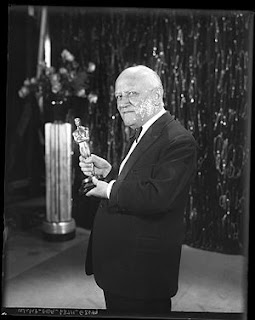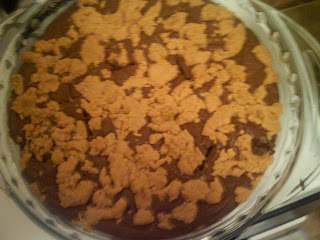The Academy of Motion Picture Arts and Sciences really tried to shake things up this year. I had heard this before, and it didn’t come as surprise. What
did surprise me was my reaction to it. I didn’t mind the changes. In fact, this was my favorite Academy Awards to date! Read on for my break down of the night.
Recent History:
The Academy has not done so well in recent years. According to the
Los Angeles Times, the Awards show reached an all-time low in 2008 with only 32 million people watching. This was the year that
No Country for Old Men won, which I think contributed to the sense of apathy. While it may have been a good movie (never seen it) it is certainly not a crowd pleaser. The Academy was getting a little artsy on itself, and the public was losing interest. So this year the Academy switched things around, picked hosts with a track record of pleasing a wide spectrum of viewers, asked winners to cut short their thanks (the lowest rated part of the show) and expanded category nominees to 10 choices instead of only 5.
The result? A 14% increase in viewers from last year, with 41.3 million people watching. This is the highest number of viewers in 5 years. I think there will be some people, including myself at first, who will see this as selling out. Especially choosing movies that are more appealing to wider audiences rather than those that were strictly critical successes and staging large scale musical opening numbers. But if you read my earlier post about the creation of the Awards and the Academy itself, you’ll see that the reason it was created was “to improve the image of Hollywood to the public.” Well that, and to beat down the unions. The original Awards were an attempt at PR for Hollywood, as well as recognition for all those in the industry who had made any great achievements throughout the past year. And that’s exactly what this ceremony was. A return to what the true purpose of the Academy Awards is. It was never meant as a highbrow ceremony aimed at those who had achieved the most "intellectual” movie of that year. Not that we should sacrifice quality, but Louis B. Mayer, father of the Academy, purposefully fought against movie winners that weren’t crowd pleasers. The Academy even dropped the award for best “Artistic Production.” They were far more concerned with the best production itself.
Bottom Line: If you want artistic, go to Sundance. I don't mind the musical numbers.
My Favorite Changes:
I have to say that I love the fact that the speeches this year were kept short and sweet. The Academy asked the nominees this year to keep their speeches short and to save us the long lists of people that we neither know nor care about. Thank your mom, fine. Thank your associate producer’s best friend’s boyfriend? Not interested. Nominees were told that they would have time immediately after their award was given to go backstage and talk into the brand new “Thank You Cam,” which would then be broadcast on
http://oscar.go.com. The nominees, surprisingly, for the most part agreed. They kept their speeches short and heartfelt, choosing to focus more on the emotions involved in winning an award than specifics. (see Sandra Bullock below)
Another thing I appreciated? For the best actor and actress categories, instead of showing clips of their nominated films, the Academy decided to choose one person for each actor/actress and have them give a short speech on that particular nominee. For example, co-star and friend
Stanley Tucci spoke for
Meryl Streep, saying that she had better enjoy this now, because he was going to start a campaign for the Academy to put a cap on the number of nominations allowed per actress. Cute.
Funniest Moment:
Who doesn’t love
Alec Baldwin and Steve Martin? As a comedy team they did a fantastic job, from the opening act to the small quips along the way. (What was with the George Clooney stare though?) I loved their jibes at Meryl Streep and other Hollywood bigwigs. My favorite moment with them had to be their appearance in a two person snuggie.
Amazing.
have to give it up as well to
Neil Patrick Harris. Boy, does that guy know how to make a comeback. Another opening musical number for an awards ceremony, but instead of seeming overdone, it came off as fresh, funny, and self-deprecating. And let’s not forget
Tina Fey and
Robert Downey Jr.’s presentation or even
Cameron Diaz and
Steve Carrell. Both deserve a nod (and not just because I’m secretly in love with RDJ).
But hands down, the absolute funniest moment of the night goes to
Ben Stiller. There are no words. So I will show this clip. My friends and I were literally rolling on the couch with laughter.
Incredible. Perfect timing. Good job Ben.
Most Awkward Moment:
Does anyone know who that woman is that jumped onto the Thank You speech for “Best Documentary?” We all thought we had another Kanye moment on our hands. Why is it that the award for "Best Documentary" almost always turns the podium in a radical, uncomfortable soap box? I most enjoy the look of chagrin on the director's face. See for yourself:
Still have no idea. Weird. Get off the stage, crazy lady in the purple satin mumu.
Most Heartwarming:
I am SO happy
Sandra Bullock won for "Best Actress". I really thought she deserved it. I got a little nervous when Oprah came out and spoke for newcomer
Gabourey Sidibe, because obviously Oprah has the golden touch. But to my happy surprise, the award went to the person I thought deserved it.
Beautifully done. Funny, sweet, and heartwarming, this speech is also pure Sandra Bullock. Fantastic dress too, by the way. Quite possibly my favorite. While I don’t know if this role was the most serious or the most taxing, Sandra Bullock became her character in
The Blind Side. I just hope she tackles more roles like this in the future.
Worst Academy Award Moment:
What was up with the dance troupe? I’m sure that they’re a very good dance troupe. But almost every number seemed the same. I get
Fantastic Mr. Fox…but how do you turn The Hurt Locker into a dance? It was weird. And lest we forget…why? This is “Best Original Score,” not America’s Best Dance Troupe. It was long, repetitive, and completely unnecessary. I’m not even going to show a clip. That’s how pointless it was. I appreciate all the changes, but bring back the best song performances. I actually enjoyed those. And leave the dancers at home.
Saddest Moment:
Obviously this is always when they do the tribute. For
John Hughes in particular, I was especially sad.
Ferris Buehler’s Day Off was part of my childhood. For a lot of people of my generation who aren’t particularly film buffs, seeing that montage was a great way for them to realize just how many great movies he was a part of. I wouldn’t have minded knowing exactly who every person giving the tribute was, although I will mention that
Macaulay Culkin’s presence riveted every girl I was in the room with.
Notable absences include:
Farrah Fawcett,
Bea Arthur,
Gene Barry, and former Oscar nominee
Richard Todd. The excuse given for the first three was that they were mainly television actors, and the salute to Farah Fawcett at the Emmy’s was more appropriate. Really? So that’s why Michael Jackson was honored? Because of his incredible and Oscar-worthy performance in
The Wiz?
Best and Worst Dressed:
Well I’m not People magazine, but I did have my favs.
Rachel McAdams,
Sandra Bullock,
Cameron Diaz and
Penelope Cruz rank as some of my top dresses. And though I wasn’t a fan of Meryl Streep’s dress, it did grow on me. It seemed very her. And designed by Project Runway alum
Chris March! Let’s be honest, Meryl could wear a potato sack and still be fabulous. I think everyone was going in a very 1940s direction, apropos of the whole “old Hollywood” idea. I think I like the Kathryn Hepburn/Lana Turner look.
Less impressed?
Jennifer Lopez-stop trying to have a comeback. You look like you’re pooping pink organza. I’m also less and less in favor of
Miley Cyrus. She looked like she was wearing a gold 1980s Madonna wannabe top. Also, you can’t be a Disney star and show that much cleavage (plus tan lines).
Zoe Saldana would have looked less like a pom-pom if the dress hadn’t flared as much, and
Sarah Jessica Parker looked cute from the front, but bizarre from the back. What’s with those silver flowers?
The guys, as usual, don’t really count. Sorry!
Finally…
A good time was had by all, even though the ceremony did begin to drag towards to end. But with good stars, great writing, and a bathroom break during the dance troupe, my friends and I really enjoyed watching it. And eating the wings. JL’s feta puffed pastries were pretty great too. Sorry WW, but I think we’ll have to try again with your cake balls. I liked the wine though!

I’ve also decided that next year I’m putting money on the winners. After all this researching, I’ve become eerily good with my predictions. But I would have lost everything on Best Picture and Director. I thought
James Cameron would win “Best Director” for
Avatar, and
Precious for “Best Picture.” Much to my surprise when
The Hurt Locker won both! It think it’s great for feminism and everything, but whether the movie deserves it remains to be seen.
Thanks it for now! Comment please and get ready for
The Broadway Melody..and sound…





















































